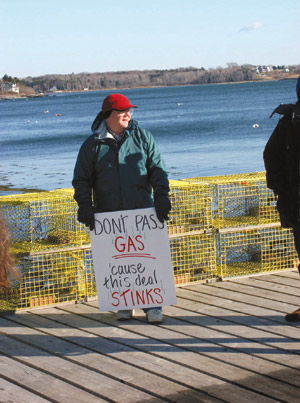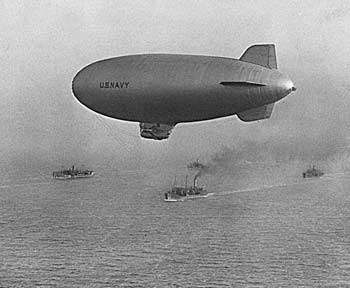Will Fairwinds Blow Foul?
by Catherine J. Brunton
|
Dubbed “Foulwinds” by opponents, the $350 million Fairwinds project proposes to build a liquid natural gas (LNG) regasification facility on 70 acres of town-owned land in Harpswell, Maine (www.harpswell.info). Fairwinds represents a joint venture by energy companies ConocoPhillips (Houston, Texas) and TransCanada (Calgary, Alberta, Canada).
The land Fairwinds seeks for its project was used for about fifty years by the U.S. Navy as a fuel depot for airplanes and ships until the operation ended around 1992. Now, Fairwinds seeks to obtain a lease on this land. “This lease if it goes through is a 30-year lease, and then we could possibly go for I think up to 50 years,” says Peter Micciche, ConocoPhillips’ Stakeholder Relations Manager. Fairwinds is offering the town $8 million per year in lease fees.
“There are certain problems in Harpswell that need to be addressed, and some people see this money as a means to address those problems. We don’t agree,” says Tom Allen, a Harpswell resident whose family owns a lobster wholesale and retail wharf in Harpswell. Allen is a member of the Fishing Families for Harpswell (FFFH) who oppose Fairwinds saying, “The Fairwinds proposal simply has too many unknowns!” FFFH lists these unknowns on its website (www.fffh.org) and discusses potential impacts to Harpswell’s resources and land. By protecting town land from Fairwinds, FFFH seeks to preserve Harpswell’s fishing heritage for future generations.
According to Allen, “Our concerns go far beyond our fishing heritage. Recently there were 27 people killed in a LNG related explosion in Algeria. If 27 people from Harpswell were killed, we’d know every one of them, or their families. This isn’t just a pocket-book issue.”
continue
|

Protester at the Fishing Families for Harpswell (FFFH) rally against
Fairwinds LNG project on December 12, 2003. (Bob Anderson photo) |
|
|
|
Blimp Sinks in U-boat Hunt!!
by Mike Crowe
|
Reports of German submarines being sighted along the east coast of the U.S. were fairly common during World War II. Coastal sightings that resulted in U-boats being sunk or captured were rare. Reports ranged from those brought to the attention of local rural authorities to those which brought in the Navy and Coast Guard.
While no one knows how many of these sightings were of actual submarines or U-boats as they were known, it’s pretty well established that there were German submarines along the Atlantic coast. England, already engaged in a war with Germany, was being supplied with raw materials, munitions and equipment by America. Until the U.S. destroyer Reuben James, loaded with primed depth charges, was mistakenly sunk off Iceland in November of 1941, the U.S. had not been targeted. The sinking, a month before Pearl Harbor, became a rallying cry for those who wanted to enter the war against Germany. After America entered the war in 1942, Germany began sinking American ships. In the first six months after entering the war, 495 U.S. ships were sunk along the Atlantic coast by a handful of U-boats.
continue
|

U.S. Navy K type blimp with naval vessels in background.
|
|
  
|
|

